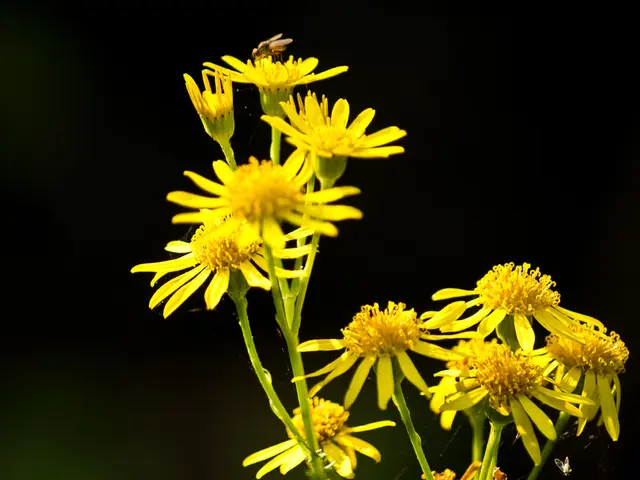Strategies to Encourage Imagination with Outdoor Activities, Igniting Awe and Curiosity in Children's Lives
The magic of watching your child's imagination unfold during outdoor play goes beyond mere sentiment; it's essential for their creative development and overall growth. When children engage with nature, ordinary items like sticks, twigs, and leaves become magical tools that fuel their imaginative play and problem-solving abilities.
Outdoor play provides a unique environment for children to experiment and take reasonable risks, all while developing creative thinking skills that indoor activities struggle to match. The natural world offers an unending canvas of textures, colors, sounds, and possibilities that ignite imaginative thinking.
Research from the Children & Nature Network shows that kids who spend regular time outdoors display up to 40% higher scores on tests measuring creative thinking compared to their indoor-only peers. This surge in creativity arises from three key mechanisms: sensory engagement, open-ended materials, and unstructured exploration.
Natural environments activate all five senses simultaneously, creating rich neural connections. Varied textures, scents, sounds, and sights offer complex sensory experiences that foster creative associations.
Nature's loose parts, such as sticks, pinecones, and leaves, serve as open-ended materials with no predetermined purpose. Children can transform these items based on their imagination into wands, drawing tools, or building components.
The organic environment encourages free exploration without rigid rules, building creative confidence and problem-solving skills. Children learn to see multiple possibilities in their surroundings, enhancing their divergent thinking abilities.
To foster an outdoor environment that sparks imagination, consider setting up nature-based play stations, incorporating natural materials, and encouraging sensory exploration. By strategically designing areas that encourage exploration and imaginative play, you'll create a creative wonderland for your little ones.
Transform your outdoor space by establishing distinct activity zones, such as a mud kitchen, wildlife observation station, building zone, sensory garden, or art station. Ensure each station has clear pathways and enough space for group play.
To create an immersive sensory experience, incorporate textures, sounds, and movement activities. Set up dedicated touch and texture stations, create sound exploration zones, and design movement activities that leverage natural elements.
To maximize open-ended play opportunities, allow child-led adventure activities and unstructured discovery time. Let kids take charge of their outdoor adventures or roam and explore the natural surroundings freely.
Incorporate art and nature activities to enhance fine motor skills, spatial awareness, and environmental appreciation. Encourage children to create nature-inspired mandalas, fairy houses, or woodland creatures. Make earth-based paints to encourage color mixing and provide clipboards and sketching materials for nature journaling.
Outdoor environments also provide natural opportunities for children to develop critical thinking and problem-solving abilities through hands-on experiences. Incorporate nature-based building projects, environmental puzzle games, and collaborative nature games.
Finally, use outdoor spaces to support emotional expression. Create mindfulness activities and nature-inspired movement activities that connect feelings with physical motion. Develop dedicated quiet zones where children can practice emotional awareness or meditate in nature.
By prioritizing nature-based play, you'll help children develop their creative potential, build the foundation for lifelong creative thinking, and foster well-rounded individuals who approach life's challenges with confidence and innovative thinking.
- Setting up nature-based play stations featuring fashion accessories created from natural materials can inspire children's imagination, encouraging creative collaboration and diversified thinking.
- Exposing children to new culinary experiences and cooking techniques through outdoor gardening and food creation contributes to their overall growth, developing skills in food-and-drink and relationship-building.
- By designing an outdoor workspace with pet-friendly elements, such as pet-friendly materials and comfortable resting areas, children can learn responsible pet care while reinforcing the bonds between pets and relationships.
- Incorporating travel accessories, such as portable tents and campfire safety tools, into nature-inspired play encourages children to explore new environments, fostering global awareness and adaptive problem-solving skills.
- Arranging a car-themed sensory station, complete with miniature cars and natural materials, can cater to children's fascination with cars while also promoting creative thinking and self-development through imaginative play and storytelling.





